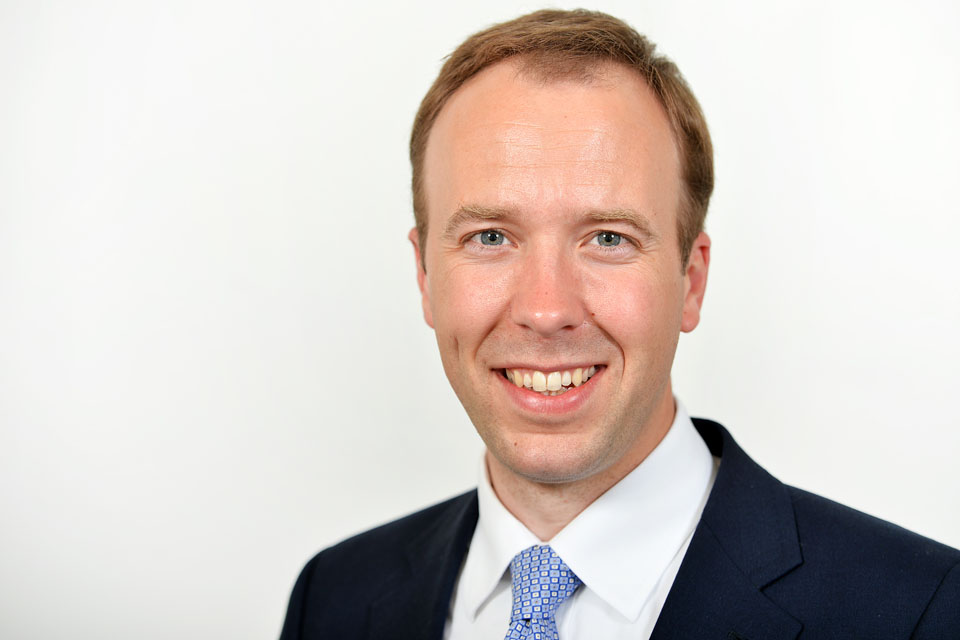Health and Social Care Secretary's statement on coronavirus (COVID-19): 15 May 2020
Health and Social Care Secretary Matt Hancock gave the 15 May 2020 daily press briefing on the government's response to the COVID-19 pandemic.

Coronavirus press conference (15 May 2020)
Good afternoon and welcome to Downing Street for the daily coronavirus briefing.
I’m joined by the Deputy Chief Medical Officer, Dr Jenny Harries, and by NHS England’s Medical Director for Primary Care, Dr Nikki Kanani.
I want to take this chance to update you on the latest coronavirus data. 2,353,078 tests for coronavirus have now been carried out in the UK, including 133,784 tests yesterday. 236,711 people have tested positive for the virus, an increase of 3,560 since yesterday. 10,024 people are currently in hospital with coronavirus. This is a 13% fall from the same time last week.
And very sadly, of those who tested positive, across all settings, 33,998 people have now died. That’s an increase of 384 since yesterday. And we mourn each one. The number of deaths is falling each day, in all settings thankfully, and we are past the peak of this virus.
I want to take a moment to remind everyone about our plans for this second phase. We have set up the new COVID Alert Level System. That’s the five levels of threat – based on the R value and the number of new cases. The alert level in turn guides the social distancing rules, which are vital in our efforts to control the virus.
A higher alert level means stricter rules. Throughout the lockdown, we have been at level 4 which means that Covid-19 is in general circulation and transmission is high or rising exponentially.
But, thanks to your shared sacrifice, we’ve brought R down. Cautiously, carefully and responsibly, we are now in a position to start moving to level 3.
We’ve set out the first of the 3 steps that we’ll take to carefully modify the social distancing rules and start to restore freedom to this country, all the while avoiding a disastrous second peak that could overwhelm the NHS.
At each step, we will closely monitor the impact on R, on the number of new infections and on, of course, all available data. And we’ll only move to the next step when we judge it is safe to do so.
In the first step, as of this week, if you work but can’t work from home, you should speak to your employer about going back in. People can now spend time outdoors and exercise as often as you like and you can meet 1 other person from outside your household in an outdoor, public place. But please keep 2 metres apart.
This weekend, with the good weather and the new rules, I hope people can enjoy being outside but please stick with the rules, keep an eye on your family and don’t take risks.
We’ve also updated what we’re asking people to do, which is to stay alert, control the virus and save lives.
For the vast majority of people, staying alert still means staying at home as much as is possible. Working from home when you can, limiting contact with people, keeping your distance if you go out, 2 metres wherever possible, washing your hands regularly. This is still the single most effective thing that you can do to keep yourself safe and, of course, self-isolating if you or anyone in your household has coronavirus symptoms.
By staying alert and following the rules, you can play a part in the national effort getting the R down and keeping R down, controlling the virus so that we can save lives, rebuild livelihoods and start to recover our freedom.